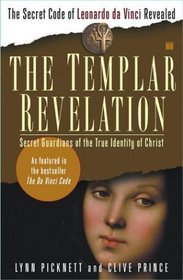Helpful Score: 8
I finished reading this book in 2005. Its topic became current and much more popular with the excitement and criticism of Dan Brown's, The Davinci Code. It is impossible to read this treatise without being capable of opening your mind to alternative Christian theology. The authors shocking theories and heavily documented research has nothing to do with Brown's fanciful novel. But by reading this work you will be viewed by many others in a certain manner. You may be ostracized by Catholics if you speak the unspeakable notions contained therein. You will not be popular with Protestants, either. The work is well-written but sometimes dense. It can be enjoyably read, however, and has the power to make you think that alternatives in religion exist and did exist before the Conclave at Nicea. The question asked is why were these alternatives subjected to such censorship during the mid-first Millenium and subsequently so fiercely prosecuted through the Middle Ages up until the present time. Definitely worth your attention.
Helpful Score: 4
Who You Gonna Believe, Me or Your Lyin' Eyes?
I have an open mind, and the controversies laid out in this book are fascinating, to say the least.
The book starts with a discussion of Da Vinci and some of his paintings. There are black and white reproductions of the paintings in the book, but they are very small and the quality is poor. As a result, it's very difficult to see what the authors are talking about.
So I decided to look at the paintings on the web. My first exploration was of "The Last Supper". I immediately found huge holes in the ideas put forth in this book. On page 20 the authors state that "...there is no wine in front of Jesus (and a mere token amount on the whole table)." But it's very clear to see (in a clear reproduction) that there are numerous glasses of wine on the table (I counted twelve), and there is definitely a glass of wine in front of Jesus, right next to his left hand. See for yourself at this great site:
http://www.haltadefinizione.com/magnifier.jsp?idopera=1
How can I believe anything else this book says, when I can see with my own two eyes that the authors simply lied about the wine? I didn't get much further in this book. I just couldn't stomach the total and complete falsehoods they put forth.
I have no problem believing that the figure to the right of Jesus could be Mary instead of John, or that Da Vinci hid other secrets or symbolism in his paintings, but arguments for those ideas should be based in fact rather than the completely erroneous foundations in this book.
I have an open mind, and the controversies laid out in this book are fascinating, to say the least.
The book starts with a discussion of Da Vinci and some of his paintings. There are black and white reproductions of the paintings in the book, but they are very small and the quality is poor. As a result, it's very difficult to see what the authors are talking about.
So I decided to look at the paintings on the web. My first exploration was of "The Last Supper". I immediately found huge holes in the ideas put forth in this book. On page 20 the authors state that "...there is no wine in front of Jesus (and a mere token amount on the whole table)." But it's very clear to see (in a clear reproduction) that there are numerous glasses of wine on the table (I counted twelve), and there is definitely a glass of wine in front of Jesus, right next to his left hand. See for yourself at this great site:
http://www.haltadefinizione.com/magnifier.jsp?idopera=1
How can I believe anything else this book says, when I can see with my own two eyes that the authors simply lied about the wine? I didn't get much further in this book. I just couldn't stomach the total and complete falsehoods they put forth.
I have no problem believing that the figure to the right of Jesus could be Mary instead of John, or that Da Vinci hid other secrets or symbolism in his paintings, but arguments for those ideas should be based in fact rather than the completely erroneous foundations in this book.





